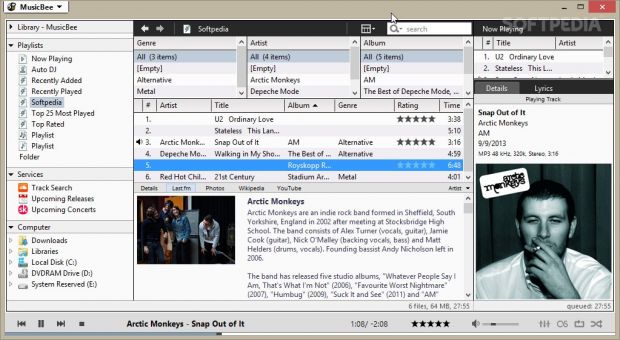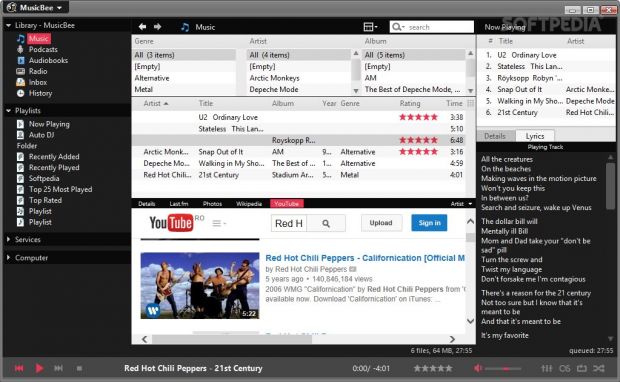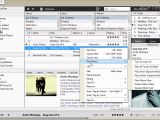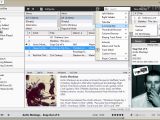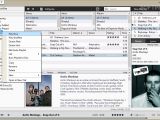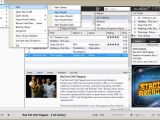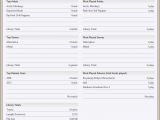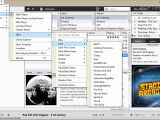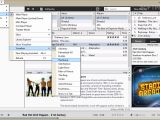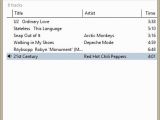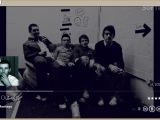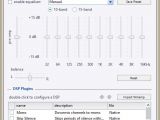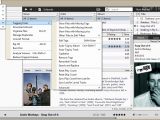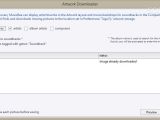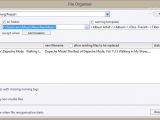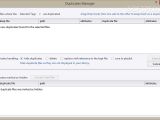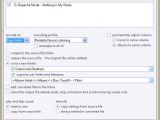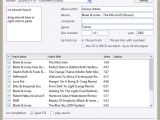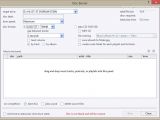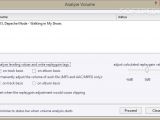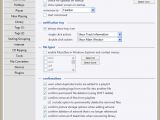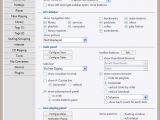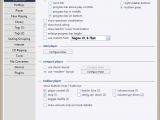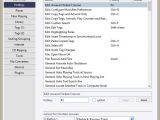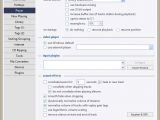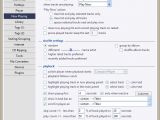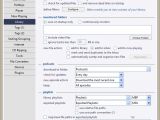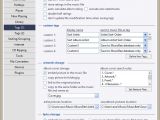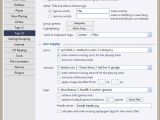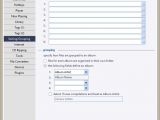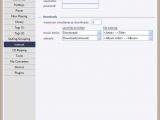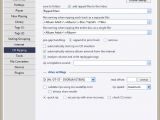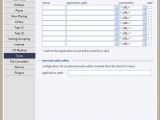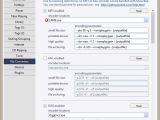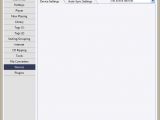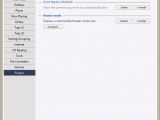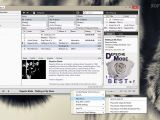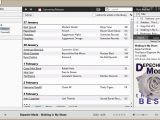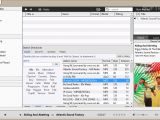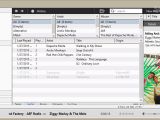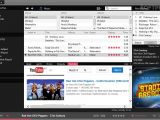MusicBee is a customizable audio player that helps with managing large music collections. Aside from playing popular audio formats, audiobooks, podcasts, and online radio stations, the player can handle audio conversion tasks, tags, automatic song information retrieval, Auto-DJ playing mode, CD ripping, and plugins.
It is free and can be run on Windows XP, Vista, 7, and 8. MusicBee is not just another simple audio player with limited audio playing capabilities that targets only rookies.
It delivers advanced features that help you work with a 5-band spectrum visualizer, apply cross fade between tracks, listen to music without interruptions with Gapless playback, fine-tune the sound with the 10-band equalizer and DSP effects, and make use of high-end audio cards with WASAPI and ASIO support.
Customizable looks
MusicBee maintains the same familiar looks adopted in other powerful audio players, so it shouldn’t pose any problems in getting used to it.
You can browse throughout your library, keep track of multiple playlists, view recently added, played or top-rated files, use online services to look for tracks, upcoming releases and concerts, as well as explore the content of your folders and drives stored on your computer.
Artwork and lyrics can also be previewed in the main panel. The best part about the GUI is that it comes with many customization options for modifying the layout menu. You may select what you want to view in your library, show or hide several tools and save the layouts you’ve configured.
For example, you can show the A-Z Jump bar that allows jumping to a particular letter in your library according to your tags, filter library files by genre, artist or album, and choose between three options for visualizing your library, namely track detail, album and tracks, or artwork.
You can work with multiple tabs, go back/forward and refresh via a browser-like functionality, and perform searches.
In case you find the main panel a little bit too comprehensive for your tastes, you can activate the compact mode which focuses on a clean design that embeds minimal audio features, such as artwork display, audio controls (e.g. play, stop, change the volume), searches, and detailed info about the artist/band.
If you are ready to sacrifice a lot of space on your desktop, the minimal mode helps you place a small, draggable and resizable panel that reveals the artwork, title/artist, and rating. When the window is out of focus, it automatically hides the basic audio controls (e.g. play, stop).
You can even lock the main player and disable web access by setting up a password. This particular option is useful for parties, where you want to lock the settings while still allowing guests to browse and play music.
If you intend to play the role of the DJ at the party, you can set the order of songs with the Now Playing queue via the drag-and-drop support, as well as shuffling and Auto DJ options. You can view multiple built-in visualizations or add some more from Winamp.
MusicBee lets you alter its visual aspect with the aid of different skins. You may apply random skins or download some more from the Internet.
Working with the library
You can add music files to the library by importing tracks and artwork from Windows Media Player and iTunes (XML file format). You may also scan for existing tracks and artwork located in user-defined folders.
It supports various file formats, such as: MP3, AAC, M4A, MPC, OGG, FLAC, APE, Opus, TAK, WV, WMA and WAV, as well as play audio CDs. Performing conversion options between audio files is also on the feature list, and you may export audio files to FLAC, MP3, OGG, WMA and other formats.
Aside from static playlists that may include your favorite songs, you may generate auto-playlists and radio-style playlists using powerful rules.
Custom Auto-DJ rules can be set up for automatically playing files from your library or streaming similar artists from Last.fm. The tool lets you subscribe to podcasts and automatically download them, access various online radio stations and save your favorites, and add audiobooks (it remembers where to resume playback next time).
Library statistics can be generated for viewing details about the top artists, genres, and most played artists. The integrated browser allows you to listen to music on YouTube and perform searches on Wikipedia and access Last.fm.
MusicBee is able to automatically display artist information from the web while playing songs, search for album artwork and download it, automatically look for lyrics, display them and save them to your tracks, and get details about the upcoming album release and concerts.
Advanced tagging system
Tags can be used for automatically organizing your library filenames and structure. You can use the Inbox for dumping audio files that are not properly tagged.
The tag editor and inspector can be used for modifying and viewing all tags. Furthermore, you are allowed to define custom tags, identify duplicates, perform advanced searches and save the custom searches, automatically tag by album or track, as well as show files with missing tags, artwork, and lyrics.
CD ripping and other smart features
MusicBee automatically detects the tracks stored on an audio CD and lets you save them on your computer. You can also synchronize songs to other devices (including iOS 3.0 and earlier devices) and monitor folders for new files.
You can use an automatic mode for activating a shutdown session (sleep or turn off computer), stopping the playback or closing the player at the end of the track or playlist, or after a certain number of minutes. Volume fading options are also available.
Furthermore, the app lets you generate a portable installation, scrobble tracks from MusicBee to Last.fm, back up your library, view played songs in the Play History, reassign hotkeys, repeat or shuffle songs, normalize loudness for individual tracks or album via the ReplayGain support, rename files based on custom rules, rate songs, and burn audio CD or data CD/DVD/BD.
Configuration settings
MusicBee integrates a thorough suite of features for helping you configure the player in detail. You can show track information in the system tray, integrate the tool in Windows Explorer, warn when duplicate tracks are added to the playlist, and confirm removal of dead links when rescanning the library.
You can set up an external video player (like VLC media player), import Winamp plugins, tweak sound effects (e.g. remove silence at the start and end of the track, apply smooth fading effect when stopping), set up shuffle options (e.g. random, different artists), and manage plugins.
The Good
The list of features is quite extensive so you can’t get bored working with this tool. MusicBee wins some extra points for the advanced audio tools it comes equipped with.
It’s skinnable and the layout is highly customizable. The cinematic modes look very good for playback, such as artist pictures, landscapes, screensaver, and Xbox-like style.
The Bad
Even a pro user needs to reserve extra time for going through the configuration pack and setting up the preferred layout.
You need to manually download the MP3 or AAC encoder due to licensing restrictions and then simply specify each encoding location in MusicBee’s configuration panel.
 14 DAY TRIAL //
14 DAY TRIAL // 